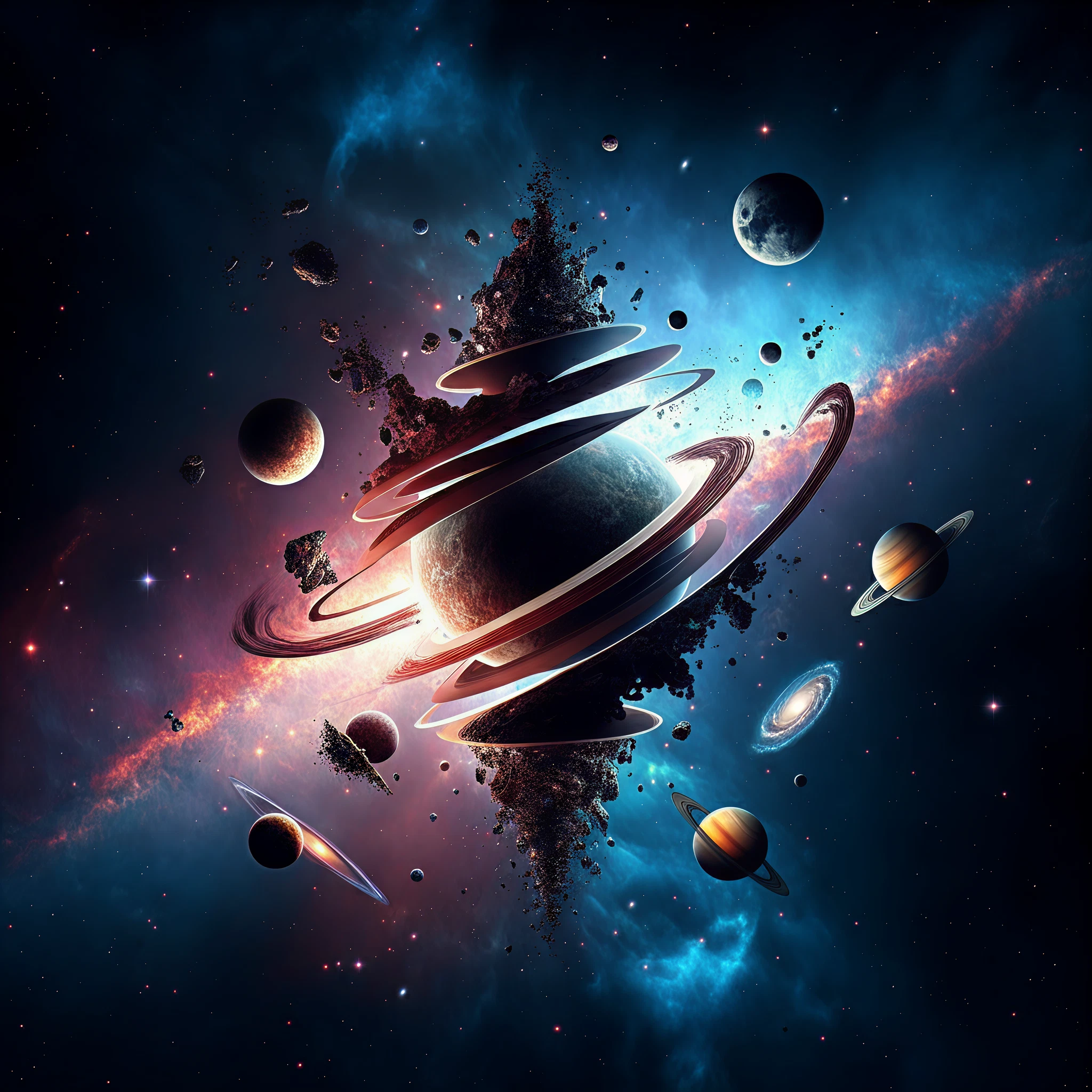The Big Bang theory has long been the prevailing explanation for the origin of the universe. But what if the story didn’t start with a single catastrophic expansion from an infinitely dense point? Dr. Eleanor Vance, a renowned physicist and cosmologist, has presented a revolutionary alternative theory that challenges this foundational idea. Her “Cyclic Universe Model” proposes that the cosmos is not a one-time event but rather an eternal series of expansions and contractions, reshaping our understanding of cosmic evolution.
This groundbreaking new perspective invites exciting possibilities about the universe’s origins, its ongoing evolution, and the unseen forces that govern it. Read on to explore Dr. Vance’s alternative model and how it could redefine our understanding of the cosmos.
What Is the Cyclic Universe Model?
Dr. Vance’s Cyclic Universe Model suggests that the universe undergoes endless cycles of expansion and contraction, rather than beginning from a single, infinitely dense “singularity.” This contrasts sharply with the conventional Big Bang theory, which posits that the universe sprang into existence roughly 13.8 billion years ago during a moment of vast, rapid inflation.
Key components of her model include:
- No Singularity: The universe didn’t originate from a single point but follows a recurring cycle of “big bangs” and “big crunches.”
- Role of Dark Matter: Dark matter, the elusive cosmic substance, plays a pivotal role in driving these cyclic events.
- Challenge to Inflation: Questions the early universe’s rapid inflationary period, instead offering a smoother, continuous evolutionary explanation.
- Observational Evidence: Backs up her ideas with data derived from novel interpretations of the cosmic microwave background (CMB)—the faint radiation leftover from the universe’s nascency.
Why Does Dr. Vance’s Theory Matter?
The Cyclic Universe Model has far-reaching implications. Here are some of the biggest ways this theory could shift our understanding of the cosmos:
- Questions the Singularity
The singularity premise of the Big Bang theory has often been criticized for being untestable. Dr. Vance suggests that the idea of an infinitely dense point is unnecessary. Instead, her model provides a testable framework via the universe’s expansion and contraction evidence.
- Shifts the Role of Dark Matter
While dark matter is often treated as a mysterious and secondary cosmic player, Dr. Vance’s theory places it at the forefront.
- Challenges the Inflation Era
The inflationary model, though widely accepted, has faced logistical challenges. Dr. Vance’s model removes the need for a rapid inflationary period, providing an alternative explanation for the observed distribution of galaxies.
- Observational Proof
By analyzing new data from telescopes capable of intricate CMB observations, her theory opens doors to discovering tangible evidence to confirm or refute this model.
How Does Dr. Vance’s Model Work?
The Universe Cycles
Under the Cyclic Universe Model, the universe operates like a pendulum, oscillating between periods of expansion and contraction:
- Expansion Phase
Following each “big bang,” the universe expands outward, forming stars, galaxies, and other cosmic structures.
- Plateau Phase
The expansion slows down over billions of years as gravitational forces counteract the outward push.
- Contraction Phase
Eventually, the universe begins to collapse inward, leading up to a “big crunch.” This sets the stage for the next cycle to begin with another expansion.
- Key Role of Dark Matter
Dr. Vance asserts that dark matter’s gravitational effects play an integral role in pulling the universe into a contraction phase while seeding the cosmic material for the next cycle.
- No Beginning or End
Unlike the Big Bang theory, this model implies that the universe has no definitive beginning or end. Instead, it is infinite and eternal, constantly renewing itself through its cycles.
Observational Evidence and Challenges
A crucial strength of Dr. Vance’s theory is its reliance on observational data from the cosmic microwave background (CMB). She proposes that the subtle patterns in the CMB align better with a cyclic model than with the inflation model of the Big Bang. Additionally, evidence from large-scale galaxy surveys and evolving gravitational-wave detectors may help confirm these periodic expansions and contractions.
However, challenges remain. For one, the cyclic model must address how entropy (disorder) does not accumulate over infinite cycles, a long-standing hurdle for such theories. Dr. Vance counters this by pointing to quantum effects and dark matter interactions that might reset entropy levels during the universe’s contraction phases.
Reactions in the Scientific Community
The Cyclic Universe Model has sparked significant debate among cosmologists. While some praise its innovation and potential to address unresolved questions in the Big Bang model, others urge caution, citing the challenges related to entropy and the lack of direct observational evidence.
Dr. Vance has emphasized that her work is not an outright dismissal of the Big Bang theory but an effort to complement and refine our understanding of the universe. “Exploration is the heart of science,” she notes. “This model might not have all the answers yet, but it opens new doors for discovery.”
What’s Next for the Cyclic Universe Model?
The road ahead will focus on further refining the model’s predictions and testing them with advanced observational tools. Ground-based telescopes like the Keck Observatory and next-generation space telescopes will likely play vital roles in hunting for the telltale signs of a cyclic universe. Dr. Vance is also collaborating with physicists specializing in quantum mechanics and dark matter to explore how these elements interact in her model.
Final Thoughts
Dr. Eleanor Vance’s Cyclic Universe Model introduces an inspiring and thought-provoking alternative to the Big Bang theory. By challenging long-held assumptions and focusing on dark matter’s critical role, her work pushes the boundaries of what we understand about cosmic origins and evolution.
Cosmology, like any branch of science, thrives on curiosity, skepticism, and innovation. The quest to understand our universe is far from over, and in the cyclical ebb and flow of ideas, groundbreaking theories such as this remind us of the boundless nature of discovery.
What are your thoughts on this revolutionary model? Join the discussion and share your perspectives with us below!








